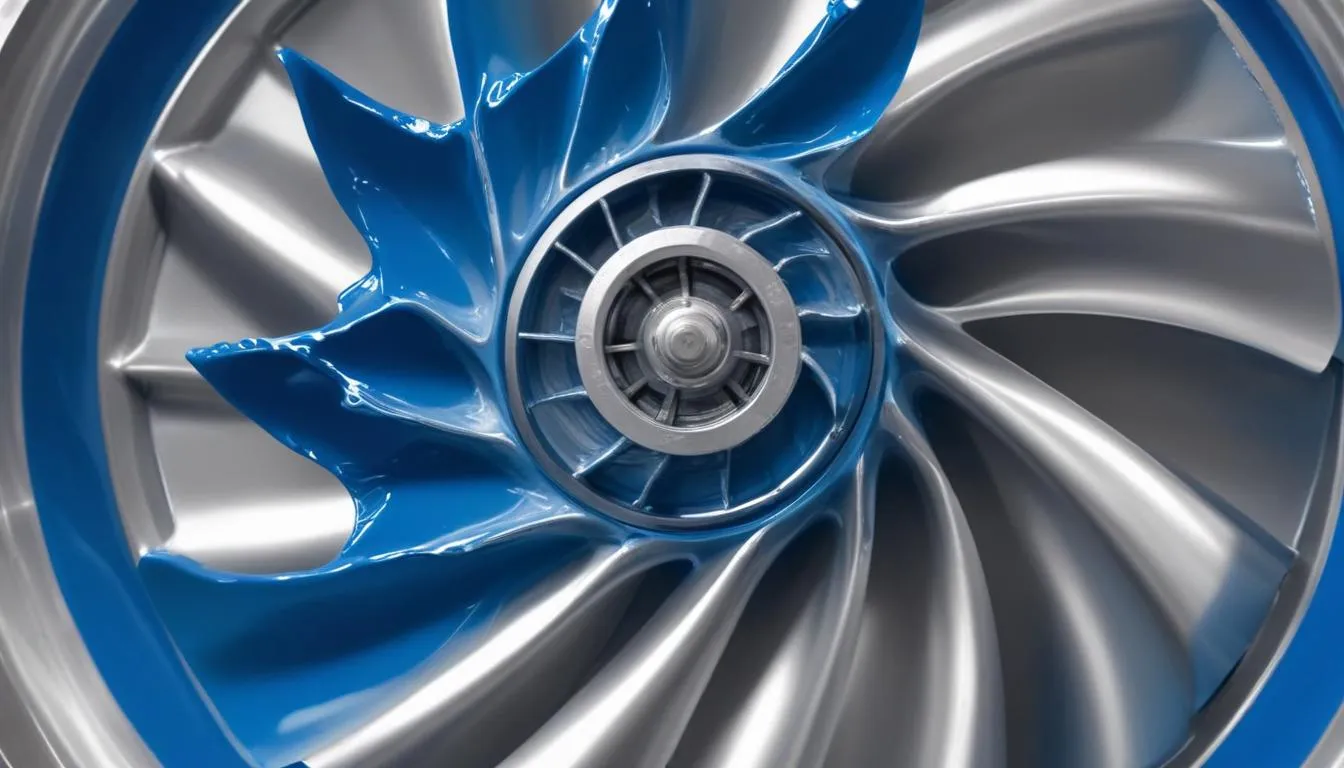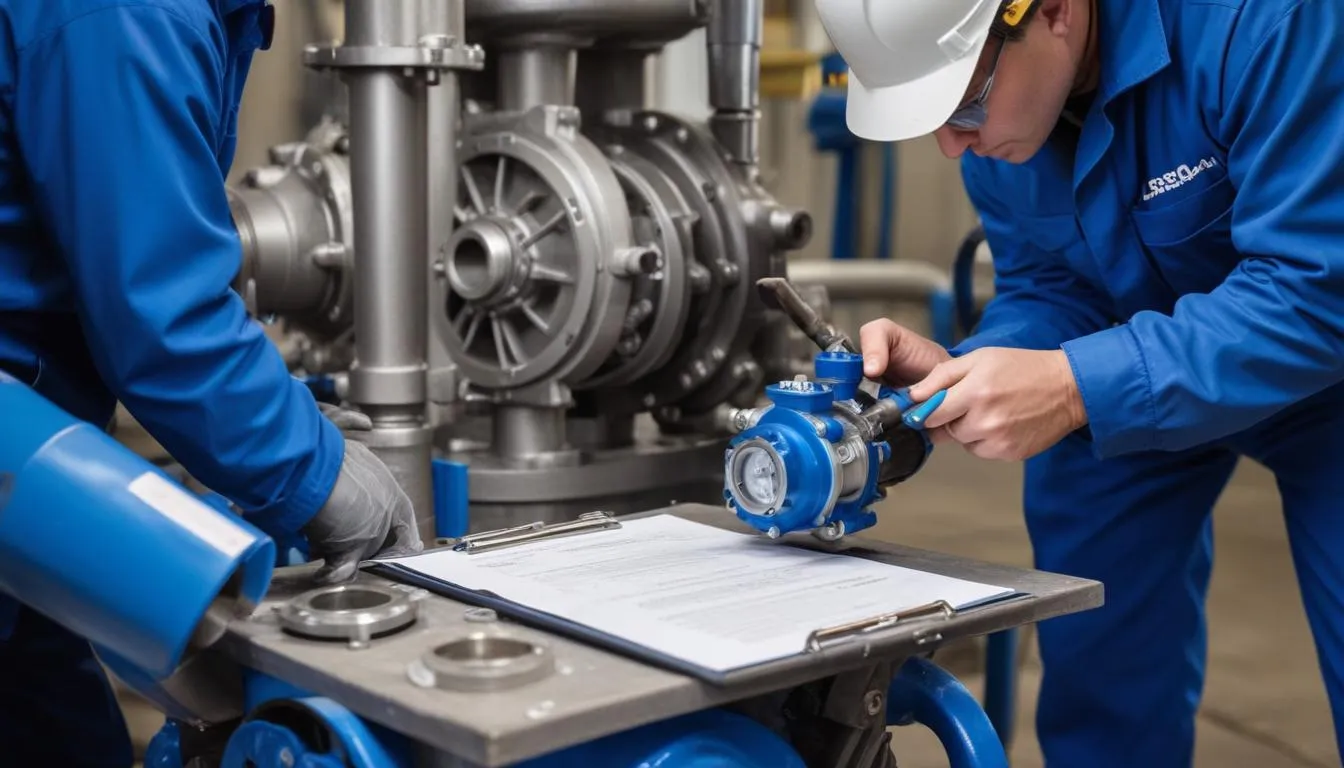 Centrifugal pumps are vital components in various industrial applications, functioning primarily to move fluids by converting rotational energy into hydrodynamic energy. Understanding the operation of these pumps is critical for effective troubleshooting and ensuring optimal performance.
Centrifugal pumps are vital components in various industrial applications, functioning primarily to move fluids by converting rotational energy into hydrodynamic energy. Understanding the operation of these pumps is critical for effective troubleshooting and ensuring optimal performance.
At the heart of a centrifugal pump is the impeller, a rotating component that imparts kinetic energy to the fluid. As the impeller spins, it creates a low-pressure area that draws the liquid into the pump through the suction inlet. The fluid is then accelerated outward by the impeller’s blades, resulting in an increase in pressure as it exits through the discharge outlet.
Key to effective operation are the pump components, which include:
- Volute casing: This component helps to convert the kinetic energy of the fluid into pressure energy.
- Seal: Essential for preventing leakage and maintaining system integrity.
- Bearings: These support the rotating shaft and contribute to smooth operation.
- Motor: The motor drives the impeller, determining the pump’s speed and efficiency.
Understanding flow dynamics is crucial, as the pump performance relies on variables such as flow rate, head, and NPSH (Net Positive Suction Head). A well-designed system maintains a balance between pressure and flow, ensuring efficient operation.
When troubleshooting centrifugal pumps, it is important to monitor key performance metrics. Issues such as unusual vibrations, excessive noise, or fluctuations in pressure can indicate underlying problems. Consistent observation of these parameters facilitates prompt identification of issues and the appropriate solutions.
It is also vital to understand the operating environment and conditions. Factors such as fluid viscosity, temperature, and the presence of solids can significantly affect pump performance. Proper alignment, adequate fluid supply, and correct installation are foundational aspects that contribute to the reliable functioning of centrifugal pumps.
Recognizing the relationship between these components and their operational dynamics lays the groundwork for effective troubleshooting, allowing for timely repairs and maintenance to enhance the longevity and efficiency of centrifugal pumps.
Common Issues and Their Causes
Centrifugal pumps are subject to a variety of issues that can hinder their performance and efficiency. Recognizing these common problems and their underlying causes can significantly enhance troubleshooting efforts. Below are some prevalent issues encountered with centrifugal pumps, along with their potential causes.
- Insufficient Flow Rate:
- Clogged Inlet or Discharge: Blockages in the suction strainer or discharge line can restrict fluid flow.
- Improper Pump Selection: Using a pump that does not match the system requirements can result in inadequate flow rates.
- Worn Impeller: Erosion or wear of the impeller can lead to reduced hydraulic performance.
- Excessive Noise and Vibration:
- Misalignment: If the pump is not properly aligned with the motor, it may produce vibrations and noise during operation.
- Unbalanced Load: An imbalance in the impeller or excessive bearing wear can cause vibration issues.
- Air Entrapment: Cavitation resulting from insufficient NPSH can produce loud noises and damage the pump.
- Leaking Seals:
- Wear and Tear: Over time, seals can degrade, leading to leaks of the process fluid.
- Improper Installation: Misaligned or improperly seated seals can lead to premature failure.
- Temperature Fluctuations: Excessive heat can cause seals to weaken, resulting in leaks.
- Inconsistent Pressure:
- Air in the System: Air leaks can cause fluctuating pressures and affect pump performance.
- Variable Motor Speed: Inconsistent power supply can lead to changes in pump speed and pressure output.
- System Blockages: Debris or sediment in the line can obstruct flow, causing pressure variations.
- Cavitation:
- Insufficient NPSH Available: If the available NPSH is lower than the required level, cavitation may occur, leading to noise and damage to the impeller.
- High Pumping Speeds: Operating the pump at excessive speeds can increase the risk of cavitation.
- Changes in Fluid Properties: Variations in fluid temperature or viscosity can also affect cavitation likelihood.
For efficient troubleshooting, a systematic approach should be followed to identify these issues. Regular monitoring of key performance indicators and maintaining a comprehensive understanding of the operational environment will facilitate timely interventions. Whether it is addressing blockages, replacing worn components, or recalibrating system pressure, prompt attention to these common issues can significantly enhance the operational reliability of centrifugal pumps and ultimately prolong their lifespan.
Step-by-Step Troubleshooting Process
To effectively tackle issues with centrifugal pumps, a structured troubleshooting process is essential. This approach allows technicians to systematically identify and resolve problems, ensuring optimal pump performance and longevity. Below is a step-by-step guide to troubleshooting centrifugal pumps.
- Gather Relevant Data:
- Document the operating conditions such as fluid temperature, viscosity, and pressure readings.
- Record any abnormal performance metrics including noise levels, vibrations, and flow rates.
- Review maintenance history to identify any recent changes or repairs that could contribute to current issues.
- Visual Inspection:
- Examine the pump for signs of damage, wear, or leakage, particularly around seals and joints.
- Check alignments between the pump and motor to ensure there are no visible misalignments that could cause vibrations.
- Inspect for blockages in the suction inlet and discharge outlet that may restrict fluid flow.
- Check Fluid Levels:
- Ensure that the fluid levels are adequate for proper pump operation. Low levels can lead to cavitation and performance issues.
- Measure the Net Positive Suction Head (NPSH) to confirm that it is above the required minimum to prevent cavitation.
- Monitor Performance Metrics:
- Use pressure gauges to measure discharge pressure and compare it to expected levels based on system specifications.
- Analyze flow rates using flow meters to detect any inconsistencies that could suggest obstruction or pump malfunction.
- Identify Operational Issues:
- If excessive vibrations are occurring, assess motor and impeller balance and look for any signs of wear.
- For cases of inconsistent pressure, investigate any air leaks in the suction line or possible blockages in the system.
- Evaluate the pump speed to ensure that the motor is operating within its designed range.
- Test Component Functionality:
- Test seals for integrity; replace any that show signs of wear or leakage.
- Inspect the condition of the impeller for signs of erosion or damage, which could affect performance.
- Verify the performance of bearings to ensure smooth operation; replace if they exhibit excessive wear.
- Implement Solutions:
- Once the root cause is identified, implement the necessary repairs or replacements of worn components.
- Adjust system settings to optimize flow rates and pressure levels as needed to restore normal operation.
- Consider additional measures such as installing filters to prevent future clogging or enhancing sealing measures to minimize leaks.
By following this structured troubleshooting process, you can identify and resolve issues effectively, ensuring reliable operation of your centrifugal pumps. This methodical approach not only aids in identifying immediate problems but also contributes to the overall maintenance strategy, thereby enhancing system reliability and performance. Regular adherence to the troubleshooting steps can help prevent recurring issues, thus minimizing downtime and operating costs.
Maintenance Tips for Longevity

- Regular Inspections:
- Schedule routine visual assessments of the pump and its components to catch early signs of wear or damage.
- Monitor the pump’s performance metrics regularly, ensuring any deviations are addressed promptly.
- Fluid Management:
- Ensure that the fluid being pumped is within the specified viscosity range to prevent excessive wear on the impeller.
- Maintain proper chemical compatibility with pump materials to avoid corrosion and degradation of components.
- Seal and Bearing Maintenance:
- Implement a schedule for inspecting and replacing seals and bearings based on their expected life cycles.
- Use proper lubrication for bearings to minimize friction and prolong their lifespan.
- Vibration Analysis:
- Utilize vibration analysis tools to monitor any abnormal vibrations, which can indicate misalignment or imbalance issues.
- Address any irregularities in vibrations immediately to prevent long-term damage to pump components.
- Calibration and Adjustment:
- Regularly calibrate the pump’s motor speed to optimize flow rates and pressure, ensuring they remain within design specifications.
- Adjust system controls and settings as necessary to adapt to changing operational requirements.
- Documentation and Record Keeping:
- Keep detailed maintenance logs that include inspection dates, repairs made, and any changes in operation.
- Utilize this data to analyze trends over time, which can help predict potential future problems.
By implementing these maintenance tips, you can significantly enhance the longevity of centrifugal pumps. Proactive measures, such as regular inspections, fluid management, and proper lubrication strategies, contribute not only to solutions for immediate concerns but also foster a stable operating environment. Consistent adherence to these practices ensures that your centrifugal pumps operate efficiently, minimizing downtime and reducing the likelihood of troubleshooting complicated issues in the future.
When to Seek Professional Help
In certain situations, it may become evident that professional assistance is necessary for troubleshooting centrifugal pumps effectively. This can arise due to a variety of complex factors that require specialized knowledge or equipment beyond standard maintenance practices.
Here are indications that it’s time to call in the experts:
- Persistent Performance Issues:
- If the pump continues to exhibit problems such as fluctuating pressure, excessive noise, or low flow rates despite following standard troubleshooting processes, expert intervention may be required.
- Persistent cavitation or vibrations that do not resolve after adjusting operational parameters can indicate deeper issues that need specialized analysis.
- Complex System Interactions:
- In systems where multiple pumps interact, understanding the dynamics among them may require the expertise of a professional to identify potential conflicts or inefficiencies.
- When troubleshooting requires extensive knowledge of the interconnected systems, such as fluid dynamics and hydraulic calculations, professional help is advisable.
- Specialized Equipment Needs:
- Some issues may necessitate advanced diagnostic tools or equipment to evaluate the pump’s performance accurately. Professionals are often equipped with such technology.
- Certain repairs and replacements may require tools or machinery that are not typically available in standard maintenance kits.
- Regulatory Compliance:
- In industries regulated by strict safety or environmental standards, ensuring compliance during repairs can necessitate professional oversight or certification.
- Professionals can provide guidance on adhering to these regulations that might otherwise pose legal liabilities for unauthorized work.
- Incomplete Troubleshooting Knowledge:
- If the technical team lacks knowledge about specific pump brands or models, involving professionals can lead to more effective and efficient troubleshooting.
- Some pumps may have unique operational characteristics, and understanding these nuances is often critical to identifying the proper solutions.
Involving professionals not only saves time but also ensures that the troubleshooting process is thorough, thereby minimizing the risk of reoccurring issues. Their expertise can lead to more effective solutions that enhance the overall reliability and efficiency of centrifugal pumps, ensuring they perform optimally in their intended applications.